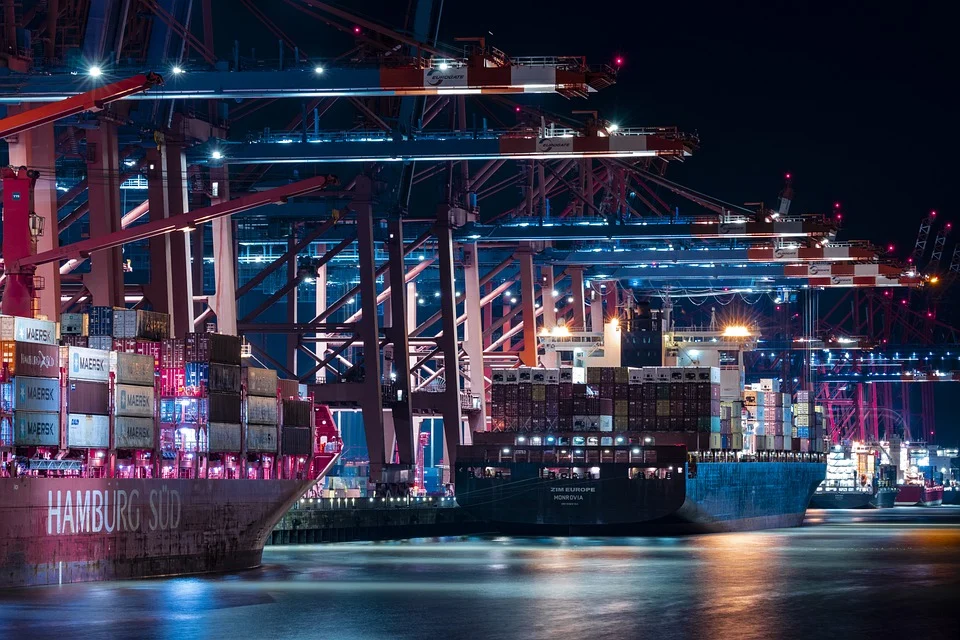As millions of items are continually created, transferred, and exported, supply chains form the backbone of a system’s economy. The global economy is dependent on a rapid and efficient global supply chain, which is worth more than $15 trillion. To operate the business, any firm today must have an extensive database. As these databases grow in size, their complexity increases, and it is critical to comprehend and collect the essential information to help the organization grow efficiently, in addition to the maintenance required to keep them working. This is a factor where supply chain management and blockchain in logistics come into play.
Current scenario of the logistics sector: A need for robust tracking and tracing mechanism!
The logistics sector was valued at $8.1 trillion in 2017 and is expected to almost treble that amount by 2023. The logistics industry is getting increasingly complex, with supply chains including an increasing number of facilities and third-party vendors for product processing, fulfilment, and transportation. According to industry estimates, around 10% of all freight invoices include and give incorrect data, resulting in various disputes and inefficiencies in supply chain management and logistics. The application of Blockchain in logistics will provide a solution to this problem of Supply Chain Traceability.

Blockchain is already transforming the logistics industry. In the supply chain, Blockchain allows ongoing transparency and authentication of transactions shared by various supply chain parties. Because it retains transactional information in a tamper-proof and irreversible way, it is a viable technological approach for adding Supply Chain Traceability into the conventional ecosystem. Furthermore, integrating and enforcing Blockchain with smart contracts in the supply chain would greatly improve logistical efficiency, smart packaging, and confidence between industry participants would skyrocket.
Benefits of Blockchain Traceability
Despite massive investments to improve part tracking or value tracking in supply chains, most businesses still only have a few part tracking mechanisms. There is a significant disconnect between internal and external systems in many organizations. A traceability system is required to achieve cost savings, reduced wait times, and overall improvements in quality and customer service, which will help organizations gain a competitive advantage. Implementing Blockchain in logistics will solve these issues for businesses across the globe; some of them are:
- Check Quality and Defects- If a corporation discovers a defective product, blockchain technology allows the business and their supply chain partners to track and trace the product, identify all suppliers engaged with it, identify manufacturing and shipment batches linked with it, and recall it effectively. Suppose a commodity is perishable (such as fresh food or certain pharmaceuticals). In that case, the Blockchain allows participating enterprises to check quality automatically: Any dangerous temperature swings can be recorded on the Blockchain via a refrigerated container outfitted with the internet of things (IoT) applications like RFID. And, if there are any doubts regarding the legitimacy of a product returned by a store, the Blockchain can dispel them because counterfeit items would lack a verification history on the Blockchain.
- Improved Freight Tracking– Using Blockchain in logistics systems and supply chains can make it easier to track and trace down freight. At the moment, same-day and on-demand delivery are becoming more popular. As a result, logistics businesses may soon become burdened because they lack the capacity to satisfy these enormous demands.
- Improved Authentication- Many trucking businesses are attempting to invest in reliable tracking technology; however, the security of these devices is uncertain. Furthermore, these systems lack a safe authentication procedure. Furthermore, because you can keep track of all your deliveries and trace them in real-time, it may significantly improve the logistics industry’s user experience. Companies can use smart tags to identify a product’s place of manufacture, track its location, and assign other relevant information to it at each stage of the supply chain. QR Codes, RFID Tags, and Signatures on Metallic or Ceramic Surfaces are all examples of smart tags.
- Increased control over Supply Chain- Blockchain in logistics and supply chain management integrates shared, trusted data into emerging technologies, such as smart packaging. It is defined as a tool that, in addition to tracking and tracing a product throughout its lifecycle, allows analysis and control of the environment inside or outside the package to inform the product’s manufacturer, retailer, or consumer on the product’s condition at any given time. QR Codes, RFID Tags, and Signatures on Metallic or Ceramic Surfaces can help supply chain management. Also, they will make it easier to track and trace products throughout the supply chain.
- Increase Trustworthiness- In logistics, numerous parties are involved in performing the tasks of transporting raw materials or products to customers. All transactions in logistics are carried out based on multiple documents to ensure the trustworthiness of the transactions. As these transactions are solely dependent on documents in global trade, the risk is often high, as you’re not sure if the other party will send you the products or if the importer will make a payment. Also, there is no definite way of knowing what tasks or processes the other party is working on in real-time unless you make a call or send an email. However, blockchain technology creates a trusted environment by ensuring that transaction information on blocks is resistant to forgery or modification.
Blockchain is projected to cause a paradigm change in logistics in the future. It will improve the efficiency of the transaction verification process and aid in the supply of goods and services through mutual confidence among participants.
MSRvantage’s capabilities in improving Traceability
MSRvantage’s Track and Trace solutions offer comprehensive and dependable methods of increasing security and providing end-to-end visibility across trade partners. Track and Trace solutions like smart packaging, thanks to the huge capacity of distributed ledger technology, create a secure environment for data interchange and workflow. It enables you to determine the current and previous locations of all goods. Finally, Track & Trace assist you in combating fraud and counterfeiting by offering a comprehensive perspective of the complicated product journey. Companies can share track and trace data with their consumers. Customers will gain trust as a result, and they will be able to check the product’s validity. MSRvantage Track & Trace systems may be relied on by industries and organizations in a variety of sectors for speed, transparency, Supply Chain Traceability, efficiency, and accuracy.
Recent posts


Cultivating Sustainability: The Role of Traceability Solutions in Revolutionizing Agriculture Practices
In an era where the global population is on the rise and environmental concerns are at the forefront of discussions, the need for sustainable agricultural
Read more 


Transforming Mining: Risk Mitigation with Blockchain Technology
The mining industry is essential to modern life, providing the raw materials for everything from smartphones to infrastructure projects. However, it's also known for its
Read more 


The Power of Supply Chain Mapping Using Blockchain in Mining
The mining industry is a complex and critical sector that forms the backbone of many global supply chains. It encompasses the extraction, transportation, and processing




